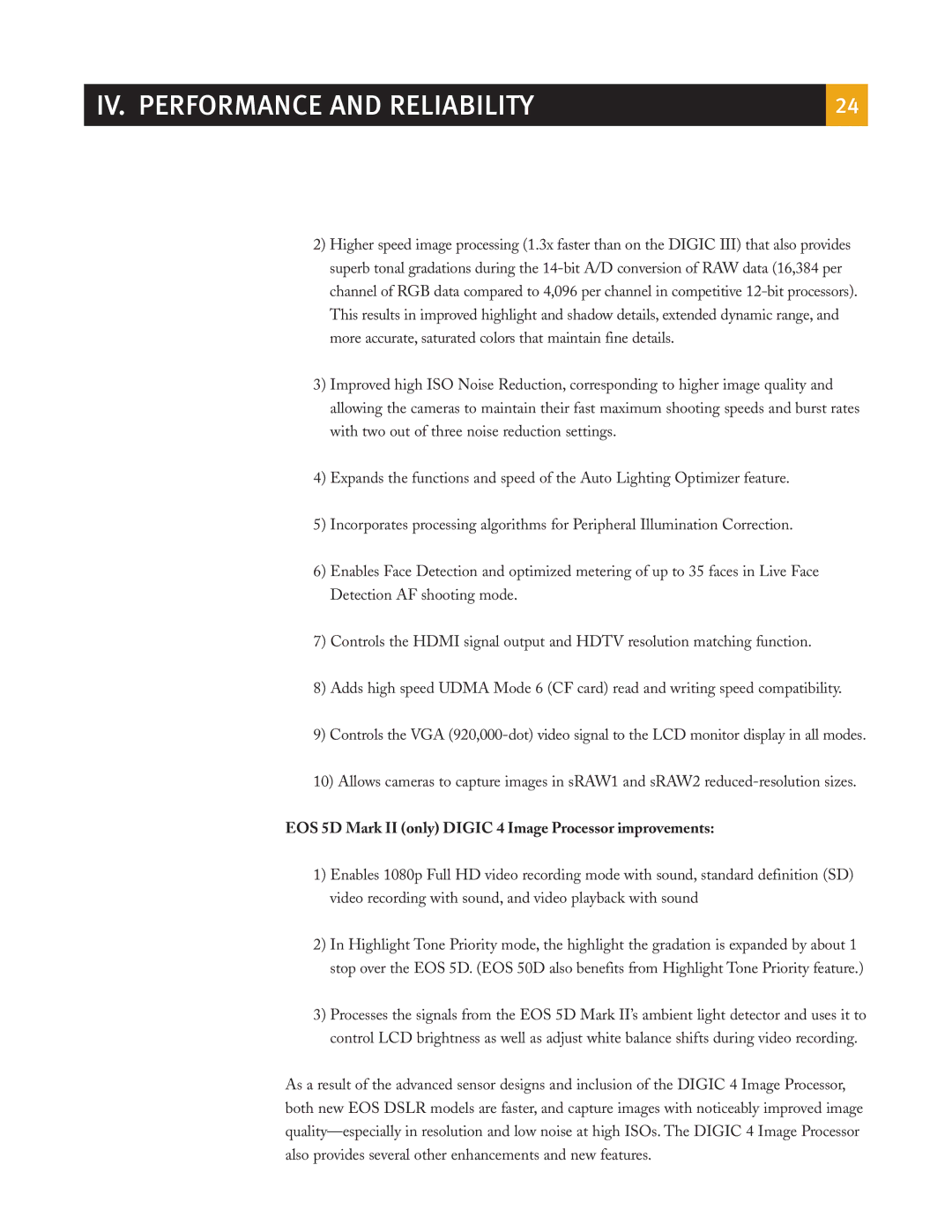IV. PERFORMANCE AND RELIABILITY | 24 |
|
|
2)Higher speed image processing (1.3x faster than on the DIGIC III) that also provides superb tonal gradations during the
3)Improved high ISO Noise Reduction, corresponding to higher image quality and allowing the cameras to maintain their fast maximum shooting speeds and burst rates with two out of three noise reduction settings.
4)Expands the functions and speed of the Auto Lighting Optimizer feature.
5)Incorporates processing algorithms for Peripheral Illumination Correction.
6)Enables Face Detection and optimized metering of up to 35 faces in Live Face Detection AF shooting mode.
7)Controls the HDMI signal output and HDTV resolution matching function.
8)Adds high speed UDMA Mode 6 (CF card) read and writing speed compatibility.
9)Controls the VGA
10)Allows cameras to capture images in sRAW1 and sRAW2
EOS 5D Mark II (only) DIGIC 4 Image Processor improvements:
1)Enables 1080p Full HD video recording mode with sound, standard definition (SD) video recording with sound, and video playback with sound
2)In Highlight Tone Priority mode, the highlight the gradation is expanded by about 1 stop over the EOS 5D. (EOS 50D also benefits from Highlight Tone Priority feature.)
3)Processes the signals from the EOS 5D Mark II’s ambient light detector and uses it to control LCD brightness as well as adjust white balance shifts during video recording.
As a result of the advanced sensor designs and inclusion of the DIGIC 4 Image Processor, both new EOS DSLR models are faster, and capture images with noticeably improved image
